children
 I recently read a book about the orphan trains, which ran between 1854 and 1929. During that time, approximately 250,000 orphaned, abandoned, and homeless children ride the train throughout the United States and Canada, to be placed with families who were looking for a child, or just as often, a worker for their farm. The orphan train movement was necessary, because at the time, it was estimated that 30,000 abandoned children were living in the streets in New York City. I had heard of the orphan trains, mostly from the movie called “Orphan Train,” but much of what really happened with those children was very new to me, and quite shocking.
I recently read a book about the orphan trains, which ran between 1854 and 1929. During that time, approximately 250,000 orphaned, abandoned, and homeless children ride the train throughout the United States and Canada, to be placed with families who were looking for a child, or just as often, a worker for their farm. The orphan train movement was necessary, because at the time, it was estimated that 30,000 abandoned children were living in the streets in New York City. I had heard of the orphan trains, mostly from the movie called “Orphan Train,” but much of what really happened with those children was very new to me, and quite shocking.
Today, while my husband, Bob Schulenberg and I were in the Black Hills, we rode the 1880 Train, as we almost always do when we are here. When they mentioned that the train had been 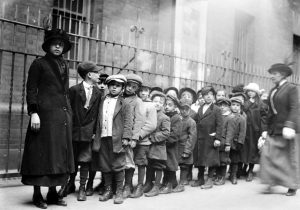 used in the movie “Orphan Train,” a fact that I had heard many times before, the stories from the book I had read came back to mind. My mind instantly meshed to train, the book, and the movie into one event.
used in the movie “Orphan Train,” a fact that I had heard many times before, the stories from the book I had read came back to mind. My mind instantly meshed to train, the book, and the movie into one event.
The children who traveled on the orphan trains were victims of circumstance, and they had no control over their lives at all. Each one hoped that their new family would be nice. The older ones didn’t have high hopes. The older boys pretty much knew that they would be farm hands. And most of them were right many were made to sleep in the barn, because they were thought to be thieves. If they were thieves, it was because they had to steal to survive. They did whatever it took to survive.
 As Bob and I rode the train today, in the eye of my imagination, I could picture what it must have been like to be one of those orphans. The were sitting there watching that big steam engine take them to someplace they didn’t know, and probably didn’t want to go. They didn’t have high hopes for a great future, but then again, the past wasn’t that great either. They were forced to make the best of a bad situation, and the people who were in charge didn’t really care what happened to them. They were just doing their jobs. I have ridden the 1880 Train many times before, but today, it felt a little bit different, somehow. I knew that I wasn’t an orphan riding that train, but I certainly felt empathy for the children who were.
As Bob and I rode the train today, in the eye of my imagination, I could picture what it must have been like to be one of those orphans. The were sitting there watching that big steam engine take them to someplace they didn’t know, and probably didn’t want to go. They didn’t have high hopes for a great future, but then again, the past wasn’t that great either. They were forced to make the best of a bad situation, and the people who were in charge didn’t really care what happened to them. They were just doing their jobs. I have ridden the 1880 Train many times before, but today, it felt a little bit different, somehow. I knew that I wasn’t an orphan riding that train, but I certainly felt empathy for the children who were.
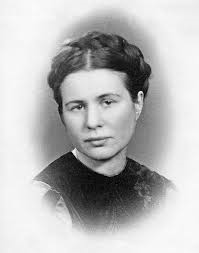 Some would consider the actions of Irena Sendler a crime, while others would consider them heroic. I suppose it was a crime, at the time it happened…a crime of opportunity, because her actions were illegal, but how could she had done anything different? Irena Sendler was born in Otwock, Poland, on February 15, 1910, to Stanislaw Henryk Krzyzanowski, a physician, and his wife, Janina Karolina Grzybowska Krzyzanowski. Irena grew up there in Otwock, a town about 15 miles southeast of Warsaw, where there was a Jewish community. Her father was a kind man who treated the very poor, including Jews, free of charge. Stanislaw died in February 1917 after he contracted typhus from his patients. After his death, the Jewish community offered financial help for the widow and her daughter, though Janina Krzyzanowski declined their assistance. I’m sure she knew they really didn’t have the money to help, but offered because of her husband.
Some would consider the actions of Irena Sendler a crime, while others would consider them heroic. I suppose it was a crime, at the time it happened…a crime of opportunity, because her actions were illegal, but how could she had done anything different? Irena Sendler was born in Otwock, Poland, on February 15, 1910, to Stanislaw Henryk Krzyzanowski, a physician, and his wife, Janina Karolina Grzybowska Krzyzanowski. Irena grew up there in Otwock, a town about 15 miles southeast of Warsaw, where there was a Jewish community. Her father was a kind man who treated the very poor, including Jews, free of charge. Stanislaw died in February 1917 after he contracted typhus from his patients. After his death, the Jewish community offered financial help for the widow and her daughter, though Janina Krzyzanowski declined their assistance. I’m sure she knew they really didn’t have the money to help, but offered because of her husband.
In 1931, Irena married Mieczyslaw Sendler, and the couple moved to Warsaw before the outbreak of World War II. The couple divorced in 1947. Irena then married Stefan Zgrzembski. They had three children, Janina, Andrzej (who died in infancy), and Adam (who died of heart failure in 1999). Then, they divorced in 1957. She remarried Mieczyslaw Sendler in 1961, but they divorced again in 1971. In college, Irena 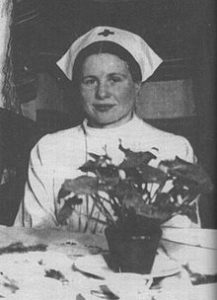 had studied to became a social worker, and she remembered the lessons of her father…to show kindness to others. It was a life lesson that would prove useful in Irena’s future.
had studied to became a social worker, and she remembered the lessons of her father…to show kindness to others. It was a life lesson that would prove useful in Irena’s future.
When the Nazis invaded Poland in 1939, Irena had access to the Warsaw Ghetto through her job. The ghetto was where hundreds of thousands of Jews were imprisoned. The situation there appalled her. Irena became a member of the Council to Aid Jews, and worked as a social worker, overseeing the city’s canteens, which provided assistance to people in need. After the Nazi invasion, Irena and her colleagues also used the canteens to provide medicine, clothing and other necessities to the city’s persecuted Jewish population. Her actions enabled her to help rescue 2,500 Jewish children from the ghetto. The group had several ways of smuggling the children out of the ghetto. Some were carried out in caskets or potato sacks, while others left in ambulances or snuck out through underground tunnels. Still others entered the Jewish side of a Catholic church that straddled the ghetto boundary and left on the other side with new identities. Irena then helped place the children at convents or with non-Jewish families. The operation was run with clockwork-like precision. As the situation grew worse for the ghetto’s inhabitants, Irena went beyond rescuing orphans and began asking parents to let her try to get their children to safety. Although she couldn’t guarantee the children’s survival, she could tell parents that their children would at least have a chance. The parents knew that it would be their  children’s only chance. Irena kept detailed records and lists of the children she helped buried in a jar. She planned to reunite the rescued children and their parents after the war. Unfortunately, most of the parents did not survive.
children’s only chance. Irena kept detailed records and lists of the children she helped buried in a jar. She planned to reunite the rescued children and their parents after the war. Unfortunately, most of the parents did not survive.
On October 20, 1943, the Nazis arrested Irena and sent her to Pawiak Prison. She was tortured in an attempt to get her to reveal the names of her associates. She refused and was sentenced to death. However, Council to Aid Jews members bribed the prison guards, and Irena was released in February 1944. Irena continued her work until the war ended, by which time she and her colleagues had rescued approximately 2,500 children. It has been estimated that Irena personally saved about 400 children. In 1965, Irena was honored for her courageous actions during the Holocaust. She was given Israel’s Yad Vashem to honor her as “Righteous Among the Nations.” Irena died in Warsaw, Poland on May 12, 2008, at the age of 98.

 My nephew, Dave Balcerzak is a gifted computer programmer, and has helped many people with their computer issues, including me. I think the most awesome thing he has done is to rebuild old computers so that he can give them people who have a need for a computer, but cannot afford one. It is a noble thing to do, and very typical of Dave. He is a kind-hearted man, who wants to be able to help people in anyway that he can, and thankfully he has talents that allow him to be able to help a lot of people.
My nephew, Dave Balcerzak is a gifted computer programmer, and has helped many people with their computer issues, including me. I think the most awesome thing he has done is to rebuild old computers so that he can give them people who have a need for a computer, but cannot afford one. It is a noble thing to do, and very typical of Dave. He is a kind-hearted man, who wants to be able to help people in anyway that he can, and thankfully he has talents that allow him to be able to help a lot of people.
My niece, Chantel Balcerzak first met her now husband, Dave when they were kids in elementary school. She liked him immediately, and really never forgot him completely. Nevertheless, they both went their separate ways, and each married other people. After a number of years, families for both, and failed marriages, they met again, and it was like they were never apart. They were both free to marry now, so they did, and they created a blended family. Dave brought his two children, Keifer and Katy to the marriage, and Chantel brought her two living children, Jake and Siara to the marriage. Chantel also brought the memory of her angel baby, Alyssa, who Dave had never met, but because she belonged to Chantel, he loved her as much as any of the children…because that is the kind of man Dave is. Dave and Chantel have been blessed with three grandchildren, Izabella and Jaxx Harman, and Reece Balcerzak. They also have a bonus granddaughter, Alice Green, with whom Dave shares a birthday. And they have a grandson on the way. When I say that Dave has been blessed, I say that because I believe that Dave’s kindness and loving ways, have given him the reward of so many blessings.
Dave has been given one more blessing, and it is one that is of the type that is near to my heart…his heart. Dave developed so heart issues, that at one point caused him to have a stroke, which was caught by a CNA, while he was in the hospital. Her quick action left Dave with no lasting damage from the stroke. His heart, however, still needed some work. As the wedding of their daughter, Siara was coming and Dave was to walk 
 her down the aisle, he worried that he would not be able to do so, but God had another plan. An interesting procedure fixed his heart, and the man who had been only able to take a few steps without being out of breath, was able to walk Siara down the aisle. He is still healthy and very blessed indeed. Today is Dave’s birthday. Happy birthday Dave!! Have a great day!! We love you!!
her down the aisle, he worried that he would not be able to do so, but God had another plan. An interesting procedure fixed his heart, and the man who had been only able to take a few steps without being out of breath, was able to walk Siara down the aisle. He is still healthy and very blessed indeed. Today is Dave’s birthday. Happy birthday Dave!! Have a great day!! We love you!!

 Those of us who live in Casper, Wyoming know about Garden Creek and Garden Creek Falls. It is a beautiful area, filled with trees and picnic tables. Hiking trails take off from the area, some of which follow the creek. Rotary Park is often full of picnickers and hikers. Everyone is out to have a great time. The Garden Creek area was a much different place in 1891, however. What we know as a day picnic area was a resort area and was lined with camps. A hotel was located at the head of Garden Creek and was a loved summer resort, frequented by local picnic parties. It was frequented by families from near and far.
Those of us who live in Casper, Wyoming know about Garden Creek and Garden Creek Falls. It is a beautiful area, filled with trees and picnic tables. Hiking trails take off from the area, some of which follow the creek. Rotary Park is often full of picnickers and hikers. Everyone is out to have a great time. The Garden Creek area was a much different place in 1891, however. What we know as a day picnic area was a resort area and was lined with camps. A hotel was located at the head of Garden Creek and was a loved summer resort, frequented by local picnic parties. It was frequented by families from near and far.
On, July 31, 1891, a cloudburst occurred over Casper Mountain, right about the area of the head of Garden Creek. The creek is about seven miles long from mouth to source, and it was lined with camps. The heavy rains triggered a flash flood. The swollen creek rushed down the mountainside. The first thing the flood waters reached was the resort at the head of Garden Creek. The buildings were crushed and swept away, and the original site of the hotel was buried beneath wreckage twenty or more feet deep. The rushing floodwaters followed the creek on down the mountain, sweeping away anything in its path. Water marks indicate a volume of water 40 feet high and 495 feet wide must have passed through a narrow area about 2 miles form the mountain proper.
As the water rushed down the side of the mountain, it crashed down upon many campers up and down the creek. Many were either sleeping or just about ready to go to bed for the night. Campers, the Newby family, were sleeping when they suddenly found themselves surrounded by water. Newby heard his wife scream for help, grabbed for her, but missed, and in the next second he found himself being carried off by the rushing water. He never saw his wife or baby son alive again. Newby caught the limbs of a floating tree, He was carried about 200 yards, before he was thrown onto a bank. The body of Mrs Newby was found the next morning beneath a pile of rubble, but the Newby’s baby boy was never found. Near the Newby camp was the camp of Samuel Harrison of Alliance, Nebraska. Harrison’s two children were caught in the flood, and carried away. The bodies of the children were recovered the next morning. The tents and wagons of all the campers up and down the creek were destroyed, and at least fifty persons escaped with nothing but their pajamas. The citizens of Casper quickly stepped forward to bring food, clothing, and comfort to the survivors.


The quick response of the citizens of Casper doesn’t surprise me, because this is a city that often steps up in the face of tragedy. The flooded creek doesn’t surprise me either, because I have seen first hand just how quickly a rain storm on Casper mountain can result in a flood…even in the city proper. All that water has to go somewhere, and Sage Creek near my house is often the recipient of a large portion of that water. Thankfully it quickly drains into the Platte River, and the area returns to normal. Our mostly dry climate helps too, I suppose. The thirsty ground absorbs the water quickly. Still, it shocks me…not that Garden Creek flooded, but more, the vast difference in that area between 1891 and 2019.
 Emma Gatewood was a survivor. When I read the first few lines about her, I thought her story was remarkable, but as I read the whole story, I realized just how remarkable she really was. Emma’s married life was pure torture, with the exception of her children, whom she dearly loved. Emma married her husband, Perry Clayton Gatewood, a 26 year old school teacher, turned farmer, when she was just 19 years old. He was a horrible man, who immediately put her to work building fences, burning tobacco beds, and mixing cement, in addition to her household chores. Three months after their wedding, he started to beat her, a practice he continued until, one day in 1939, he broke her teeth, cracked one of her ribs and bloodied her face. Women didn’t have as many options back then, so Emma was stuck. Because Emma threw a sack of flour at him, the police came and arrested her, not him, and put her in jail. The next day, when the mayor saw her battered face, he took her to his own home, where she remained under his protection until she got back on her feet.
Emma Gatewood was a survivor. When I read the first few lines about her, I thought her story was remarkable, but as I read the whole story, I realized just how remarkable she really was. Emma’s married life was pure torture, with the exception of her children, whom she dearly loved. Emma married her husband, Perry Clayton Gatewood, a 26 year old school teacher, turned farmer, when she was just 19 years old. He was a horrible man, who immediately put her to work building fences, burning tobacco beds, and mixing cement, in addition to her household chores. Three months after their wedding, he started to beat her, a practice he continued until, one day in 1939, he broke her teeth, cracked one of her ribs and bloodied her face. Women didn’t have as many options back then, so Emma was stuck. Because Emma threw a sack of flour at him, the police came and arrested her, not him, and put her in jail. The next day, when the mayor saw her battered face, he took her to his own home, where she remained under his protection until she got back on her feet.
Emma and Perry had 11 children, and unfortunately, the treatment of their mother was not hidden from them. Nevertheless, the story of Emma’s abuse at the hands of her husband went untold for more than a 50 years. In 2014, a newspaper reporter named Ben Montgomery, Emma’s great grand nephew, told her story in his book, “Grandma Gatewood’s Walk.” Emma Rowena (Caldwell) Gatewood passed away on June 04, 1973 in Gallipolis, Ohio, of an apparent heart attack, at the grand old age of 85, having accomplished much since her birth on  October 25, 1887, in Gallia County, Ohio. Her father, Hugh Caldwell, a farmer, had lost a leg after being wounded in the Civil War and in his depression, turned to a life of drinking and gambling. Her mother, Evelyn (Trowbridge) Caldwell, raised the couple’s 15 children, who slept four to a bed in the family’s log cabin.
October 25, 1887, in Gallia County, Ohio. Her father, Hugh Caldwell, a farmer, had lost a leg after being wounded in the Civil War and in his depression, turned to a life of drinking and gambling. Her mother, Evelyn (Trowbridge) Caldwell, raised the couple’s 15 children, who slept four to a bed in the family’s log cabin.
In an interview with her children, Montgomery, who worked for The Tampa Bay Times in Florida. In his research for the book, her surviving children spoke with him and entrusted him with her journals, letters, and scrapbooks. In that material he found stark references to what she had withheld from news interviewers: that her husband had nearly pummeled her to death several times. During one beating, she wrote, he broke a broom over her head. Her children told Montgomery that their father’s sexual hunger had been insatiable and that he forced himself on their mother several times a day. He made their lives a nightmare for years.
The woods became a place of solace and safety for Emma, who would often escape to them amid her husband’s rants. She came to view the wilderness as protective and restorative. In 1937 she left him and moved in with relatives in California. She was forced to leave behind two daughters, ages 9 and 11, who were still at home. Emma knew her husband would not beat the girls, and she could not afford to take them with her. She wrote to the girls to explain it to them, making sure not to leave a return address. In the letter, she wrote, “I have suffered enough at his hands to last me for the next hundred years.” Nevertheless, Emma couldn’t stand to be away from her girls any longer, so she returned after a few months. Her life became a prison after that. Her husband would not let her out of his sight. She later wrote that in 1938, he beat her “beyond recognition” 10 times. “For a lot of people the trail is a refuge,” Brian B. King, a publisher of guidebooks and maps for the Appalachian Trail Conservancy, said in a telephone interview. “But seldom is it a refuge for something as bad 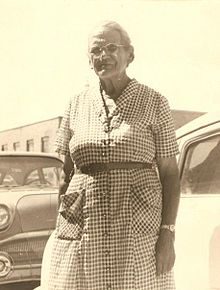 as that.” A short time later, her husband left for good, filed for divorce, which was granted in 1941, and he was out of her life.
as that.” A short time later, her husband left for good, filed for divorce, which was granted in 1941, and he was out of her life.
Emma’s hiking became a saving grace for her…she loved it. In 1949, she came across a National Geographic magazine article about the Appalachian Trail and became intrigued to learn in reading it that no woman had ever hiked it solo. In 1954, in her first attempt at hiking the Appalachian Trail, she started out in Maine, but broke her glasses, got lost, and was rescued by rangers, who told her to go home. Undaunted, she tried again in 1955, starting from Georgia this time. She was 67 years old, a mother of 11, a grandmother and even a great-grandmother when she became the first woman to hike the entire Appalachian Trail by herself in one season. She would go on to repeat the feat 2 more times. Soon everyone was calling her “America’s most celebrated pedestrian.” In 1959, Emma went on to conquer the 2,000 miles of the Oregon Trail, trekking alone from Independence, Missouri to Portland, Oregon.
 Most people have attended a circus at one time or another, although they are becoming a little more something from the past. Nevertheless, they used to be huge attractions, and when the circus came to town, almost the whole town turned out to watch the show. That was something that worked against the people of Hartford, Connecticut on July 6, 1944. At that time, Hartford was a city of approximately 13,000 people. The Independence Day festivities had just passed and now the circus was in town to continue the week’s excitement for the townspeople. The Ringling Brothers and Barnum Baily Circus was famous for its incredible show, held under a huge circus tent. At 8,000 people in attendance, about 2/3 of the town was there. It was going to be a great show, and the children of the town were beyond excited.
Most people have attended a circus at one time or another, although they are becoming a little more something from the past. Nevertheless, they used to be huge attractions, and when the circus came to town, almost the whole town turned out to watch the show. That was something that worked against the people of Hartford, Connecticut on July 6, 1944. At that time, Hartford was a city of approximately 13,000 people. The Independence Day festivities had just passed and now the circus was in town to continue the week’s excitement for the townspeople. The Ringling Brothers and Barnum Baily Circus was famous for its incredible show, held under a huge circus tent. At 8,000 people in attendance, about 2/3 of the town was there. It was going to be a great show, and the children of the town were beyond excited.
With the tent filled to capacity, a fire is the worst nightmare, but that is what they had. No one knows exactly what happened, and the 8,000 people inside really had no time in which to react. As panic spread as fact as the fire broke out under the big top of circus, killing 167 people and injuring 682. Two thirds of those who perished  were children. The cause of the fire was unknown, but it spread at incredible speed, racing up the canvas of the circus tent. Suddenly, patches of burning canvas began falling on them from above, and a stampede for the exits began. People became trapped under fallen canvas, but most were able to rip through it and escape, but after the tent’s ropes burned and its poles gave way, the whole burning big top came crashing down, trapping those who remained inside. Within 10 minutes it was over, and some 100 children and 60 of their adult escorts were dead or dying.
were children. The cause of the fire was unknown, but it spread at incredible speed, racing up the canvas of the circus tent. Suddenly, patches of burning canvas began falling on them from above, and a stampede for the exits began. People became trapped under fallen canvas, but most were able to rip through it and escape, but after the tent’s ropes burned and its poles gave way, the whole burning big top came crashing down, trapping those who remained inside. Within 10 minutes it was over, and some 100 children and 60 of their adult escorts were dead or dying.
The fire investigation revealed that the tent had undergone a treatment with flammable paraffin thinned with three parts of gasoline to make it waterproof. These days, no on would consider using gasoline for such a purpose, but unfortunately at that time it was used. Ringling Brothers and Barnum and Bailey Circus eventually agreed to pay $5 million in compensation, and several of the organizers were convicted on manslaughter charges. In 1950, the cause was finally uncovered in the case when Robert D Segee of Circleville, Ohio, confessed to starting the Hartford circus fire. Segee claimed that he had been an arsonist since the age of six and that “an apparition of an Indian on a 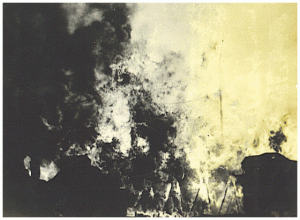 flaming horse often visited him and urged him to set fires.” In November 1950, Segee was convicted in Ohio of unrelated arson charges and sentenced to 44 years of prison time. The Hartford investigators raised doubts over his confession. Segee had a history of mental illness, and it could not be proven he was anywhere within the state of Connecticut when the fire occurred. Connecticut officials were also not allowed to question Segee, even though his alleged crime had occurred in their state. Segee, who died in 1997, denied setting the fire as late as 1994 during an interview. Because of this, many investigators, historians, and victims believe the true arsonist…if it was indeed arson…was never found.
flaming horse often visited him and urged him to set fires.” In November 1950, Segee was convicted in Ohio of unrelated arson charges and sentenced to 44 years of prison time. The Hartford investigators raised doubts over his confession. Segee had a history of mental illness, and it could not be proven he was anywhere within the state of Connecticut when the fire occurred. Connecticut officials were also not allowed to question Segee, even though his alleged crime had occurred in their state. Segee, who died in 1997, denied setting the fire as late as 1994 during an interview. Because of this, many investigators, historians, and victims believe the true arsonist…if it was indeed arson…was never found.
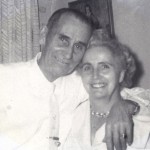 My grandfather, George Byer was a man of gentle strength. Many people may not think those to traits go together, but in him they did. He was always a hard-working man, who gave his all to support his family, but maybe the gentleness came partly from the fact that he had 9 children, 7 of whom were girls. That can make a man understand that girls are often the fairer gender, at least in those days. Grandpa Byer lived in a time when the women stayed home and raised the family and the men went out and made the living…even if that meant working long hours or multiple jobs. Grandpa also lived during the great depression, when jobs were scarce, so the women need not have bothered to go look for one very often.
My grandfather, George Byer was a man of gentle strength. Many people may not think those to traits go together, but in him they did. He was always a hard-working man, who gave his all to support his family, but maybe the gentleness came partly from the fact that he had 9 children, 7 of whom were girls. That can make a man understand that girls are often the fairer gender, at least in those days. Grandpa Byer lived in a time when the women stayed home and raised the family and the men went out and made the living…even if that meant working long hours or multiple jobs. Grandpa also lived during the great depression, when jobs were scarce, so the women need not have bothered to go look for one very often.
While times were tough sometimes, the family really never wanted for much, and grandma, Hattie Byer could somehow make the meager portions of food go a long way, and still never turn 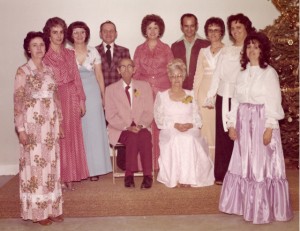 away a stranger in need of a meal, and it seemed there was always a plentiful supply of those strangers and friends who would come for dinner at the Byer house. They were a good team, and truth be told, Grandma Byer was probably just as tough, if not more so than Grandpa Byer, who did have a definite soft spot in his heart for people. Grandpa worked at a number of jobs, but the one I probably heard the most about was the building of Alcova Dam Grandpa had also worked on Kortez Dam and Pathfinder Dam, but my mom, Collene Spencer, who was Grandpa’s middle child, always mentioned to us that her dad had helped build Alcova Dam, every time we drove past it. She was very proud of her dad, and with good reason, because he was very special.
away a stranger in need of a meal, and it seemed there was always a plentiful supply of those strangers and friends who would come for dinner at the Byer house. They were a good team, and truth be told, Grandma Byer was probably just as tough, if not more so than Grandpa Byer, who did have a definite soft spot in his heart for people. Grandpa worked at a number of jobs, but the one I probably heard the most about was the building of Alcova Dam Grandpa had also worked on Kortez Dam and Pathfinder Dam, but my mom, Collene Spencer, who was Grandpa’s middle child, always mentioned to us that her dad had helped build Alcova Dam, every time we drove past it. She was very proud of her dad, and with good reason, because he was very special.
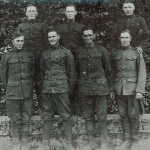 Grandpa served in the Army during World War I as a cook. While he was very brave, and never a man to shirk his duties, I think it would have been hard for this gentle soul to have a military career of killing people. Nevertheless, had the need arisen, he would have done it, because he always knew that he would protect those in his charge. He was a very loyal soldier, and he would never have allowed those he cared about to be killed, if he could stop it. His gentle strength was, for me, his trademark trait. I remember it from my childhood as clearly as if Grandpa Byer were standing right next to me as I write this story. he was the sweetest, kindest, most gentle man anyone could have known. Today would have been my Grandpa Byer’s 126th birthday. Happy birthday in Heaven, Grandpa. We love and miss you very much!!
Grandpa served in the Army during World War I as a cook. While he was very brave, and never a man to shirk his duties, I think it would have been hard for this gentle soul to have a military career of killing people. Nevertheless, had the need arisen, he would have done it, because he always knew that he would protect those in his charge. He was a very loyal soldier, and he would never have allowed those he cared about to be killed, if he could stop it. His gentle strength was, for me, his trademark trait. I remember it from my childhood as clearly as if Grandpa Byer were standing right next to me as I write this story. he was the sweetest, kindest, most gentle man anyone could have known. Today would have been my Grandpa Byer’s 126th birthday. Happy birthday in Heaven, Grandpa. We love and miss you very much!!
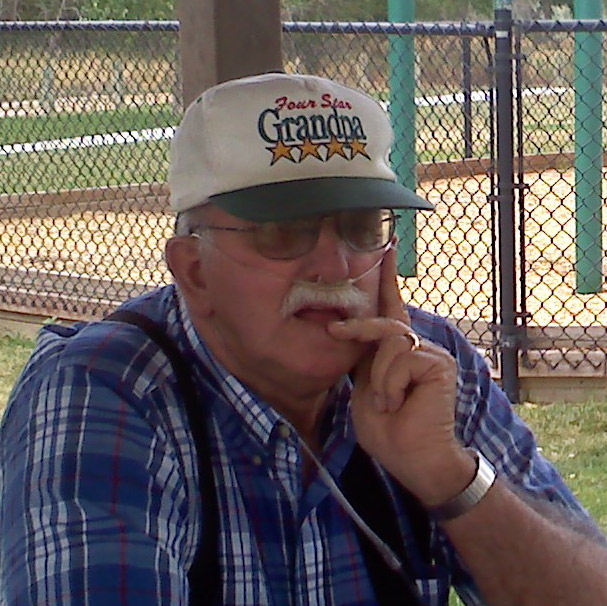 My Uncle Jack McDaniels was always a great guy…very pleasant and always ready with a joke of some other funny remark. All my life, I enjoyed being around him and my Aunt Bonnie. Uncle Jack went home to Heaven on July 14, 2012, and he has been greatly missed by his family ever since. As I was getting ready to write his birthday story, I wanted to capture his personality in a way that maybe many people did not know him, so I contacted his daughter-in-law, Deena for assistance. I like to think that my inquiry gave Deena and Michael a prime opportunity to remember his dad on his birthday, because what better way to remember a parent than happy memories discussed on their birthday.
My Uncle Jack McDaniels was always a great guy…very pleasant and always ready with a joke of some other funny remark. All my life, I enjoyed being around him and my Aunt Bonnie. Uncle Jack went home to Heaven on July 14, 2012, and he has been greatly missed by his family ever since. As I was getting ready to write his birthday story, I wanted to capture his personality in a way that maybe many people did not know him, so I contacted his daughter-in-law, Deena for assistance. I like to think that my inquiry gave Deena and Michael a prime opportunity to remember his dad on his birthday, because what better way to remember a parent than happy memories discussed on their birthday.
If you have ever been a part of a family on the larger side of size, you know that when they all get together, especially when there are little children in the mix, it is not a quiet event. Michael remembered a large family gathering that was quite loud, as you can imagine. Suddenly, everything went still…how that many people would all get quiet at the same time is shocking enough in and of itself. Nevertheless, for a few moments all was quiet before someone finally spoke. Uncle Jack said, in relief, “Thank goodness, I thought I had gone deaf!” I can absolutely see my Uncle Jack saying just that, with a twinkle in his eye, because that is how he was. He always saw the humor in life.
Uncle Jack and Aunt Bonnie’s son, Michael married his wife, Deena in 2006, so Deena got to know Uncle Jack for a little over six years. Deena told me about her first real interaction with Uncle Jack. Michael, having grown up with his dad’s influence, made the joke that he found Deena by the side of the road. So, when Uncle Jack met Deena for the first time, he said “So, you must be the hitchhiker!!!” The nickname stuck, and she is the hitchhiker to this day. It was all part of his teasing nature.
One thing I didn’t know, but wished I did, is that Uncle Jack loved local history. It is something he shared with Michael and Deena. Conversations between the three of them often centered around Casper and Natrona 
 County history. They all collect books on local history too. Uncle Jack would share his collection of books with us, and their love of history grew. Books on local history became popular gifts for birthdays and Christmas, and I’m sure they are extra special treasures, now that Uncle Jack is in Heaven, as are the wonderful conversations they had over the years. Today would have been Uncle Jack’s 81st birthday. Happy birthday in Heaven, Uncle Jack. We all love and miss you very much.
County history. They all collect books on local history too. Uncle Jack would share his collection of books with us, and their love of history grew. Books on local history became popular gifts for birthdays and Christmas, and I’m sure they are extra special treasures, now that Uncle Jack is in Heaven, as are the wonderful conversations they had over the years. Today would have been Uncle Jack’s 81st birthday. Happy birthday in Heaven, Uncle Jack. We all love and miss you very much.
 Many people think of some of the so-called commercial holidays, as being just a racquet to get people to spend money on candy, flowers, and cards, but in this day and age, I can’t think of a holiday we need more than Valentine’s Day…a day that is dedicated to love. We need more love in this world, and not just romantic love…but, love in general. I suppose it is a shame, in a way, that we need to have a day to remind us to tell our loved ones how much they mean to us, but in reality, we can get so busy that a reminder becomes a good idea. I think most of us tell loved ones how much we love them, but it never hurts to have a special day for that purpose.
Many people think of some of the so-called commercial holidays, as being just a racquet to get people to spend money on candy, flowers, and cards, but in this day and age, I can’t think of a holiday we need more than Valentine’s Day…a day that is dedicated to love. We need more love in this world, and not just romantic love…but, love in general. I suppose it is a shame, in a way, that we need to have a day to remind us to tell our loved ones how much they mean to us, but in reality, we can get so busy that a reminder becomes a good idea. I think most of us tell loved ones how much we love them, but it never hurts to have a special day for that purpose.
While we need love in many places in this world, I still have to say that my favorite place is in my home. I married the love of my life almost 44 years ago, and we are still very much in  love. And what better day to tell each other than on Valentine’s Day…the day that is dedicated to love. Every other day, with the exception of our anniversary, is probably considered pretty normal, even though we love each other every day. It’s just that while Valentine’s Day may seem corny to some people, it’s like a special date night for those who are in love.
love. And what better day to tell each other than on Valentine’s Day…the day that is dedicated to love. Every other day, with the exception of our anniversary, is probably considered pretty normal, even though we love each other every day. It’s just that while Valentine’s Day may seem corny to some people, it’s like a special date night for those who are in love.
Bob is the most special part of my life. He is the father of my children, and we share four grandchildren and one great granddaughter. They are the rewards of the life we have made together, and because we have been together for so many years, we get to share the rewards of our life together. I couldn’t have asked for a better life than this life with my loving husband. We are so blessed, and that makes Valentine’s Day that much more special, because it is a day that is dedicated to our love. Happy Valentine’s Day to my wonderful husband, Bob, and to everyone everywhere.
 My grand nephew, Jake Harman has really come into his own over the past few years. We have watched Jake go from being a footloose kid, who didn’t really have any definite direction in life, to a family man with three kids who absolutely love their Daddy. Jake and his wife, Melanie are perfect for each other. Their personalities are quite opposite of each other, and maybe that is part of why their relationship works. As to the children…Jake loves kids, and they love him. He can get them laughing in an instant. I think that is mainly because Jake is a big kid himself.
My grand nephew, Jake Harman has really come into his own over the past few years. We have watched Jake go from being a footloose kid, who didn’t really have any definite direction in life, to a family man with three kids who absolutely love their Daddy. Jake and his wife, Melanie are perfect for each other. Their personalities are quite opposite of each other, and maybe that is part of why their relationship works. As to the children…Jake loves kids, and they love him. He can get them laughing in an instant. I think that is mainly because Jake is a big kid himself.
Speaking of kids, Jake is now the assisting the youth pastor at Mountain View Baptist church. As I said, Jake  is great with kids, but as we all know, teenagers are a different thing. Teenagers take patience, tempered with stubbornness. It isn’t that teenagers are bad people, but just that they are growing up and they want to show that to others. Teenagers love to show their teacher, or in this case, youth leader, that teenagers run the show. I know this, because like Jake, I was a Sunday School teacher for the teenagers. I’ll never forget my first day. The students told me, “We have gone through a lot of teachers!” They were proud of that, but unfortunately for them, they hadn’t met me…yet. My comment was, “Well, you won’t go through me!” And they didn’t. So Jake, if you want to use
is great with kids, but as we all know, teenagers are a different thing. Teenagers take patience, tempered with stubbornness. It isn’t that teenagers are bad people, but just that they are growing up and they want to show that to others. Teenagers love to show their teacher, or in this case, youth leader, that teenagers run the show. I know this, because like Jake, I was a Sunday School teacher for the teenagers. I’ll never forget my first day. The students told me, “We have gone through a lot of teachers!” They were proud of that, but unfortunately for them, they hadn’t met me…yet. My comment was, “Well, you won’t go through me!” And they didn’t. So Jake, if you want to use  that one, it’s on the house. Teachers of teenagers need all the help they can get. Just ask your Aunt Liz. That’s why we start with babies.
that one, it’s on the house. Teachers of teenagers need all the help they can get. Just ask your Aunt Liz. That’s why we start with babies.
In Jake’s case, I think the teenagers will find that he is really a lot of fun. He loves being goofy, and laughing, as well as making others laugh. That gives him an edge when it comes to handling kids, and even teenagers. He can make even studying fun, and the fun activities even more fun. When you start the day out with humor, it’s always going to be a sunny day. And Jake has that funny bone trait going on, so I know the kids he works with will be blessed by him. Today is Jake’s birthday. Happy birthday Jake!! Have a great day!! We love you!!

